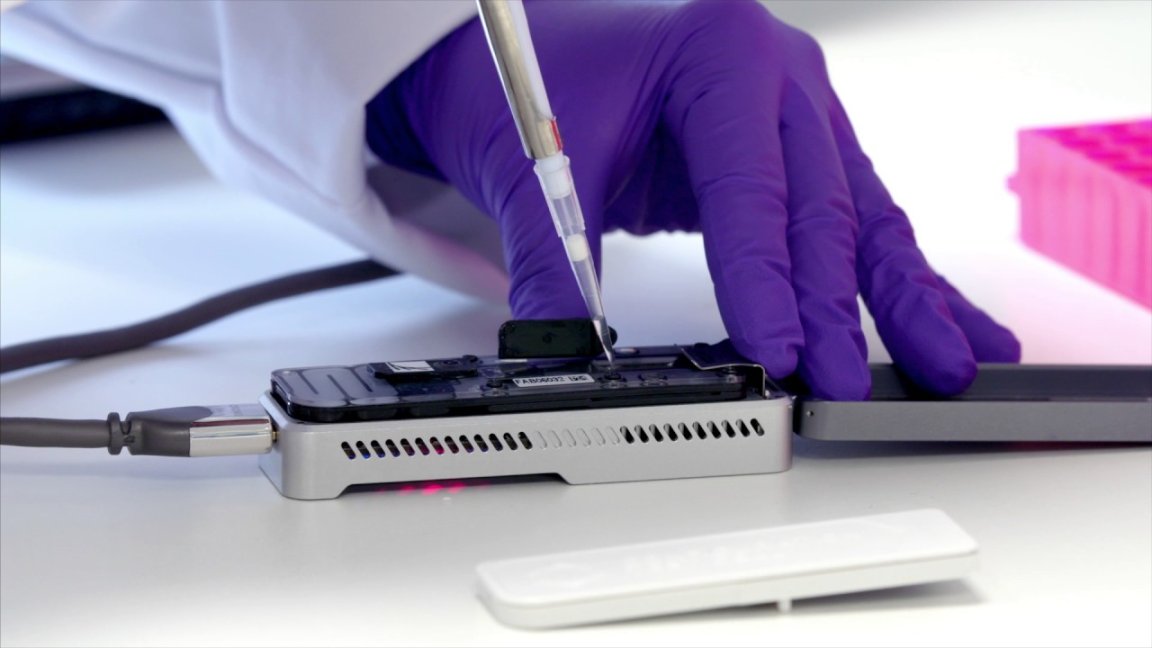
DNA ID
New software, developed by cooperating teams of researchers from Columbia University and the New York Genome Center (NYGC), will help to quickly and accurately verify identity using DNA. The method involves using the MinION DNA sequencing device, a small, credit card sized device that is capable of sequencing 10-20 GB of data in real-time, along with off-the-shelf technology like what is available commercially through outlets like 23 & Me or Ancestry.com.
According to the study’s senior author Yaniv Erlich who is a professor of Computer Science at Columbia Engineering, an adjunct core member at NYGC, and a member of Columbia’s Data Science Institute, “Our method opens up new ways to use off-the-shelf technology to benefit society.” This research was published in the latest issue of the journal eLife.
In the two-step process, the researchers were able to take individual variants (unique nucleotides) from DNA sequenced with the MinION and apply a probability algorithm (called a Bayesian algorithm) to compare each unique set of variants with corresponding variants in other genetic profiles in the database. With each cross-reference, the probability of verifying a match increases, narrowing the search. Testing has shown that the system is capable of verifying a match between 60-300 cross-references and it takes only minutes.
The team likens their technique, which they call “MinION sketching” to the ability of our brains to identify recognizable images in abstract patterns. The study’s lead author Sophie Zaaijer, a postdoctoral researcher at Cornell Tech, compares the technique to someone making out a bird from a few features of something like a Picasso painting.
Game Changer
This technology has a number of important potential applications. One such application will make it easier for disaster victim identification (DVI) experts to identify bodies after major disasters like plane crashes or earthquakes. Speaking to Vice, Richard Bassed, an experienced DVI expert explained that the use of DNA to identify bodies is expensive and takes more time than other methods, like examining dental or medical records. The MinION and this new software may be able to reduce both cost and the amount of time it takes to achieve positive identification.
The technology can also help to mitigate wasted funds and time in important cancer research. Jon Lorsch, director of the National Institute of General Medical Sciences (NIGMS) wrote a report in 2014 showing how the misidentification and contamination of cell lines in medical research are responsible for potentially more than $9 billion in wasted medical research funding on studies that cannot be replicated.
The new method will allow labs to easily verify cell lines at a relatively cheap price, leading to faster research and better allocation of funds, which will likely amount to better and more frequent breakthroughs. Neville Sanjana, a core faculty member at NYGC and assistant professor at NYU’s Department of Biology stated, “At the right price, every lab will adopt this.”
The ability to quickly, easily, and cheaply authenticate DNA has game-changing potential. The ability to identify bodies after a tragedy can help families and friends gain important closure. Eliminating resource waste in medical research can also help to speed along the next big life-saving discovery. The software is already available for download on GitHub under a GNU General Public License, so your lab can begin changing the world today.